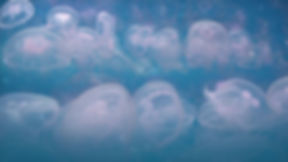top of page

University of California, Davis
Dept. of Wildlife, Fish & Conservation Biology
and
Coastal and Marine Sciences Institute
(Bodega Marine Laboratory)
DEEP SEA RESEARCH
Click on images
to enlarge.
• MANNED SUBMERSIBLES:
Some of the most challenging and interesting questions about deep marine communities can only be answered by utilizing manned and unmanned submersibles. These vehicles have added new dimensions to our arsenal of tools to study these hard to access and infrequently observed systems. Two manned submersibles that Tom has used to conduct research and that have contributed significantly to our understanding of intermediate depth and deep-sea processes, especially in tropical latitudes, are featured below.
• ALVIN (Woods Hole Oceanographic Institution):
To analyze the nutritional requirements of deep-sea sea urchins on the abyssal plain off the coast of St. Croix, U.S. Virgin Islands, Tom used the research submersible ALVIN to collect the urchins and their most probable food resources. Interestingly, their guts were filled with several species of sea grasses originating from shallow coral reef lagoons that had become dislodged during winter storms and drifted for years to reach the deep sea. To determine where the urchins were actually obtaining their nutrition from (as opposed to just consuming blades of grass), urchin tissues were analyzed using stable isotopes of carbon and nitrogen and found to match perfectly to the sea grasses, verifying that they were not only consuming the seagrasses, but totally dependent on this foreign food source from shallow lagoons 10,000-12,000 ft up-slope.

ALVIN

ALVIN: Pre-Dive Check Out
• MAKALII: (University of Hawaii)
During the early 1980s, while conducting research at Enewetak Atoll (Micronesia) on bioturbation by ghost shrimp mobilizing radioacive fallout from nuclear testing by the U.S. government in the 1950s, Tom joined a team in utilizing the research submersible Makalii (from the University of Hawaii) as the platform to investigate and describe the physical and biological structure of the reef slope at Enewetak Atoll to 360 m (1,180 ft) depth.

MAKALII

MAKALII: In-situ
See deep sea related Publications from Primary Literature
#s: 38, 36, 35, 34, 17, 13, 9, 8
See deep sea related Publications from Secondary Literature
#s: 50, 30, 26, 15, 14, 13, 12, 11, 10, 9, 8, 7.

bottom of page